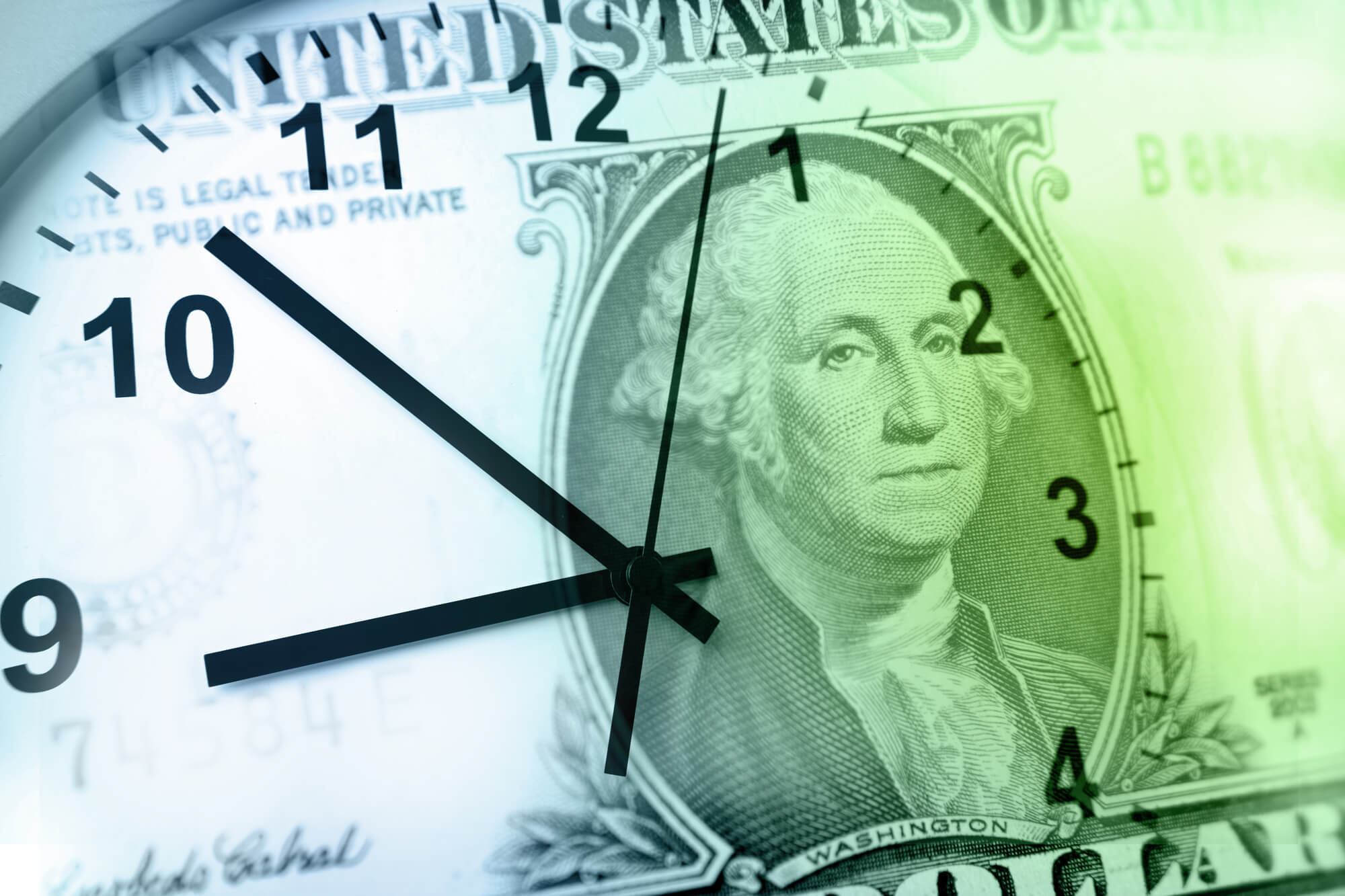Wondering what a savings rate is and why it’s important to increase it? When it comes to reaching your financial goals, calculating and monitoring your savings rate is essential.
As a general rule, cutting back on your biggest expenses, increasing your income, and automating and investing your savings are three guaranteed strategies to increase your savings rate. As your savings rate increases, the time it takes you to become financially independent lessens. You will reach your financial goals faster the more you accelerate your savings rate.
Focusing on these three strategies will put you on track to reaching your savings target. You can get started by increasing 1% today, and working towards 5%, 10%, or even 50%+ to help you reach your goals even faster.
What is My Savings Rate and Why is it Important?
Your savings rate is the percentage of your income that you save and invest. To find your savings rate, calculate the total amount of money you save and divide it by your income. Using annual calculations, your numbers would look like this.
Annual Savings (amount saved in both pre-tax and after-tax accounts): $25,000
Annual Income: $100,000
Savings Rate: 25% ($25,000 / $100,000 = .25 or 25%)
You may also find it easier to back into your savings rate using a monthly calculation.
Monthly Savings (amount saved in both pre-tax and after-tax accounts): $2,084 (or $25,000 annual savings / 12 months)
Monthly Income: $8,333 (or $100,000 annual income / 12 months)
Savings Rate: 25% ($2,084 / $8,333 = .25 or 25%)
Tracking your savings rate is an efficient way to help you understand your personal financial habits and to reach your financial goals. Additionally, it is an important marker when charting your way up your financial mountain. Understanding your savings rate helps you understand how long it may take you to reach financial independence.
Generally (assuming a current zero net worth, 5% annual returns, and an FI number calculated with the 4% rule), the amount of time it will take you to reach financial independence based on your savings rate looks like this.
| Savings Rate | Working Years Until Retirement |
|---|---|
| 5% | 65 |
| 10% | 51 |
| 15% | 42 |
| 20% | 36 |
| 25% | 32 |
| 30% | 28 |
| 35% | 24 |
| 40% | 21 |
| 45% | 19 |
| 50% | 17 |
| 55% | 14 |
| 60% | 12 |
| 65% | 11 |
| 70% | 9 |
| 75% | 7 |
| 80% | 6 |
| 85% | 4 |
| 90% | 3 |
| 95% | 2 |
Breaking this down further, the amount you’re saving each year is growing by 1) your contributions, and 2) the compounding gains of your investments (5% in this example). If we were to look at the numbers assuming a $100,000 annual salary, they would look like this.
| Annual Income | Annual Savings | Savings Rate | Annual Expenses | FI Number (Annual Expenses / 4%) | Years to FI |
| $100,000 | $50,000 | 50% | $50,000 | $1,250,000 | 17 |
The higher your savings rate, the sooner you will reach financial independence. For more details on calculating your savings rate, read here.
How Can I Increase My Savings Rate?
While there are many ways to increase your savings rate, not all of them are created equally. There are three important strategies to increasing your savings rate quickly. Strategically focusing on these three areas of your personal finances will accelerate your savings rate more than other strategies.
1. Cut Back on Your Largest Expenses
Each dollar you save in effect increases your savings rate. But cutting back marginally on your largest expenses saves you more money in total than cutting back on smaller expenses. Strategically bringing down your housing, food, and transportation costs will increase your savings rate faster than cutting back on smaller monthly expenses like entertainment or subscription services.
Let’s say you have a savings rate of 25%. Imagine you spend 35% of your income on housing,15% on transportation, 15% on food, and 10% on everything else (entertainment, subscriptions.
| Expenses | % of Income |
| Savings | 25% |
| Housing | 35% |
| Transportation | 15% |
| Food | 15% |
| Everything Else | 10% |
Your housing is generally one of –if not your largest–expenses. This would be your basic living quarters (most likely rent or a mortgage) and may also include expenses like utilities, maintenance, or other housing costs that come month to month.
If you were to decrease your housing expenses to 30% you’d be adding 5% back into your savings rate! This might be a lot easier than you think, when moving to a cheaper place or finding ways to offset your costs through potential rental income may already be available to you.
Likewise, if you were to cut back 5% on other major expenses like food or transportation, they would get totaled into your savings rate as well. If you spent 5% less on food and 5% less on transportation, you’d now have a 40% savings rate from these expenses alone.
| Expenses | % of Income |
| Savings | 40% |
| Housing | 30% |
| Transportation | 10% |
| Food | 10% |
| Everything Else | 10% |
Trying the same approach with smaller expenses doesn’t have the same return on your investment. If your annual entertainment expenses were 2%, cutting back would yield a marginally smaller return on your overall savings rate. The same methodology applies to other small expenses like subscriptions or hobbies.
Therefore, finding ways to decrease your rent or offset your mortgage payments with rental income, making home cooked meals instead of eating out, and taking public transportation instead of driving and paying for gas and parking can all be effective plans to helping you reach a higher savings target. Bumping your savings rate from 25% to 40% will save you an extra 11 years of saving on your journey to financial independence.
2. Make More Money
Once you find a stable expenditure level, every dollar you make on top of your current income directly increases your savings rate. Avoiding lifestyle inflation (spending more as you make more) guarantees you increasingly higher gains in your savings rate the more your income grows. You can cut expenses only so much – it’s impossible to spend less than $0. But there is a limitless amount of money you can make. Focusing on the upside enables you to reach a higher and higher savings rate.
If you were to increase your income by $10,000 and keep your expenses the same, your savings rate would automatically increase. For example, if your expenditures were $50,000 at an $75,000 income, you would have a 33% savings rate with $25,000 savings. If you made $10,000 more and your expenses stayed the same, your savings rate would now be ~41%! Instead of $25,000 savings, you would be saving $35,000. $35,000 divided by $85,000 ($75,000+$10,000) gives you an extra 8% bump in your savings rate for a total of 41%. And you didn’t have to cut back a single dime.
That jump increases as you make more money and continuously avoid lifestyle inflation.
| Annual Expenses | Annual Income | Annual Savings | Savings Rate |
| $50,000 | $75,000 | $25,000 | 33% |
| $50,000 | $100,000 | $50,000 | 50% |
| $50,000 | $125,000 | $75,000 | 60% |
| $50,000 | $200,000 | $150,000 | 75% |
| $50,000 | $250,000 | $200,000 | 80% |
| $50,000 | $300,000 | $250,000 | 83% |
| $50,000 | $500,000 | $450,000 | 90% |
We were able to increase our savings rate from 13% to 77% in a little over a year simply by making more money. Remember to save diligently and avoid inflating your lifestyle as you make more money, however. There is a diminishing return on material possessions, and you don’t need to spend every dollar you earn. The more you save and the faster you save, the sooner you can reach financial independence.
Remember, if you have a specific FI timeline you’re trying to achieve, making more money may be a more practical way to get there. To illustrate this point, let’s say you had an FI target of 7 years. In order to meet your goal, you’d need to have a 75% savings rate. Let’s say you can’t decrease your expenses to $18,750, and instead found that $50,000 was your spending threshold. Increasing your income to $200,000 from $75,000 would yield a 75% savings rate ($200,000 annual income – $50,000 expenses = $150,000 savings. $150,000 / $200,000 = .75 or 75%).
| Annual Income | Annual Savings | Savings Rate | Annual Expenses | FI Number (Annual Expenses / 4%) | Years to FI |
| $75,000 | $56,250 | 75% | $18,750 | $468,750 | 7 |
| Annual Income | Annual Savings | Savings Rate | Annual Expenses | FI Number (Annual Expenses / 4%) | Years to FI |
| $200,000 | $150,000 | 75% | $50,000 | $1,250,000 | 7 |
For more details on whether you should increase your income or cut back expenses to better increase your savings rate, read here.
3. Automate and Invest Your Savings
If you find it hard increasing your savings rate, you may be spending first and saving later. Simply flipping the order of your saving and spending will help you increase your savings rate. Take advantage of savings accounts at your disposal. If you work full-time, you likely have access to a 401(k) or other tax-advantaged accounts. Automate your pre-tax investments. Doing so not only lowers your taxable income, but it shields that money from spending you might otherwise be tempted to make. Enroll in your company’s 401(k), open an IRA, and begin investing.
Additionally, find other savings vehicles that will increase your savings rate. Put your money to work by investing in low-cost index funds or other investments that will yield a return on your money. As you do so, saving $25,000 turns into $26,750, expecting a 7% annual rate of return, through the magic of compounding. As you continue to save and invest, your money will compound on itself year over year, growing your gains into a sum that will take you to the top of your financial mountain.
Remember the chart from before? The timelines are based on investments with a consistent annual return over time. The timelines below don’t work if you’re not investing your money with an expected annual rate of return of 5%.
| Savings Rate | Working Years Until Retirement |
|---|---|
| 5% | 65 |
| 10% | 51 |
| 15% | 42 |
| 20% | 36 |
| 25% | 32 |
| 30% | 28 |
| 35% | 24 |
| 40% | 21 |
| 45% | 19 |
| 50% | 17 |
| 55% | 14 |
| 60% | 12 |
| 65% | 11 |
| 70% | 9 |
| 75% | 7 |
| 80% | 6 |
| 85% | 4 |
| 90% | 3 |
| 95% | 2 |
To avoid spending money you should otherwise be saving, sign up for automated investments with your bank or brokerage account. You can enroll in automatic investments so that when you get paid, you automatically pay yourself in the form of savings. Taking the effort out of saving manually means that all you need to do is monitor your savings in order to see it grow.
Summary
In total, the time it takes you to cut back on your biggest expenses, make more money, and automate and invest your savings will be the best possible way to spend your time to increase your savings rate. It’s the gondola to your climb on your way up your financial mountain. Strap in, set your goals, and plan your ascent – you’ll be there in no time.
More Savings Rate Articles
If you’re hungry to learn more about your savings rate, we’ve put together a comprehensive guide for you that will teach you everything you need to know.
Ultimate Savings Rate Guide: Everything You Need to Know
Looking for deeper dives on a particular subject? Check out the rest of the articles from our Savings Rate series.
Savings Rate 101: How to Calculate Your Savings Rate
Savings Rate 201: How to Beat the Savings Rate Next Door
Savings Rate 301: Avoid These Pitfalls With Your Savings Rate
Savings Rate 401: How to Determine the Best Rate For You
Savings Rate 601: Increase Income or Cut Expenses?
See you at the top of your financial mountain.
Climb on FinBase,
J









